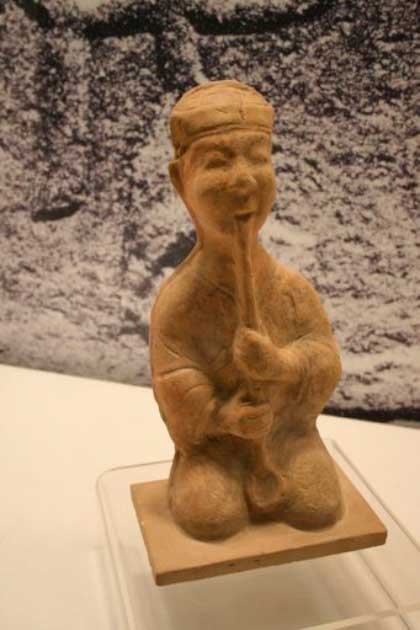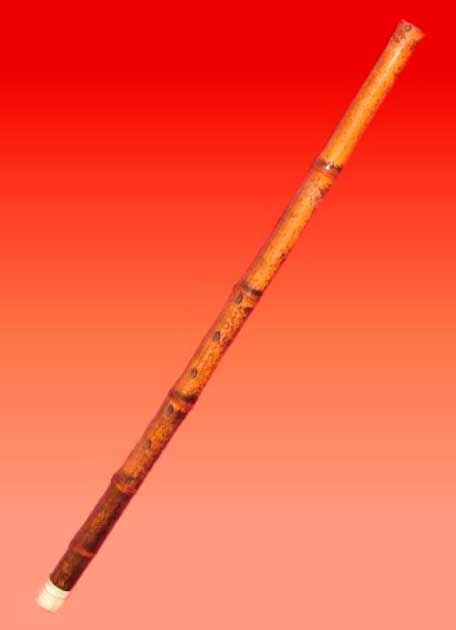China’s Reed Flute Cave: A Natural Masterpiece with a Rich History
There are a lot of fascinating natural wonders in the world, but one of the most interesting is the Reed Flute Cave in Guilin, in southern China. The Reed Flute Cave is a limestone cave known for its beautiful natural rock formations, outdoor reeds, and ancient inscriptions, and is now a popular tourist destination. The more than 70 inscriptions inside the cave dating back to the Tang Dynasty (618-907 AD) provide insight into the history of the cave's use. Below, we’ll share some more about the history of this famous cave and how it has been used by humans throughout time.

Reed Flute Cave before the most recent lighting was installed. (jimmyan8511 / Adobe Stock)
The Making of the Xiao Flute
The Reed Flute Cave is named after and mostly known for the type of reeds that grow outside of the cave, which are called “xiao.” These reeds are considered a type of bamboo and were historically used to make flutes. The flutes made from these reeds are called "xiao flutes," and have a long history of use in Chinese culture.

A Chinese Eastern Han Dynasty (25-220 AD) ceramic figurine of a musician playing a xiao flute, from the Pengshan Tomb of Sichuan. (Prof. Gary Lee Todd / CC BY SA 4.0)
Making a xiao flute requires the maker to cut a reed to the desired length, and then hollow out the center to make it into a tube. The reed is then smoothed and manipulated to create the desired shape and size of the flute. One end of the flute is then cut to create the mouthpiece, and finger holes are drilled in the side of the flute to allow the player to produce different notes.
As previously noted, xiao flutes have been used in traditional Chinese music for centuries, and are considered a central symbol of Chinese culture. These ancient flutes are still used in many different genres of music, including folk, classical, and even pop. They have a distinct, high-pitched sound listeners describe as “melodic and soothing.”
Throughout history, the Reed Flute Cave has been a source of inspiration for musicians and flute-makers, and it has frequently been used as a place to practice playing xiao flutes. Today, xiao flutes are still made and played, and can be found in Chinese music ensembles, performances, and for sale as souvenirs. Visitors to the Reed Flute Cave may also have the opportunity to see a demonstration of a xiao flute being played and can sometimes even try it out themselves.
- Kizil Caves, earliest Buddhist caves in China, hide rare images from the time of the Silk Route
- The Mogao Grottoes in China, the Legendary Home to a Thousand Buddhas and a Hidden Library

Xiao reeds growing nearby gave the Reed Flute Cave its name. Used in Confucian ceremonies, including weddings and funerals, and often associated with scholars, xiao are sometimes inscribed with poems. (Public Domain)
A History of the Reed Flute Cave: Sacred and Mystical Inscriptions
Beyond the flutes, the Reed Flute Cave has an additional history, dating back to at least the Tang Dynasty (618-907 AD). Historians believe that the Reed Flute Cave was used in ancient times for religious and ceremonial purposes by the early Chinese. The evidence for these claims is the inscriptions found inside the cave, which provide some insight into the history of the cave's use.
The inscriptions in the Reed Flute Cave are a significant historical and cultural feature of the cave. To date, historians have found over 70 inscriptions found inside the cave, all with various styles and meanings. Many of these inscriptions include poems, personal messages, and signatures written in Chinese characters. Though challenging to interpret, historians have determined that the majority of these inscriptions were likely left by ancient visitors to the cave.
Many of the inscriptions found are religious or spiritual in nature, expressing the visitors' admiration for the natural beauty of the cave, and describing it as a sacred or mystical place. Other inscriptions, such as the signatures and messages, are much more personal and may have been left by visitors as a way to commemorate their visit.
Today, the Reed Flute Cave inscriptions are protected by the Chinese government and are considered a major part of the cultural heritage of the region. They are also now a key attraction for tourists visiting the Reed Flute Cave, and are an important aspect of the overall experience.
A Symbol of Survival: The Reed Flute Cave as a WWII Haven
The Reed Flute Cave’s historical use doesn’t stop at visitors. In fact, it played a major role for the Chinese during World War II. During the war, the Reed Flute Cave was used as a shelter by the residents of Guilin, China. When Guilin and surrounding regions were being heavily attacked by Japan, many residents sought refuge in the cave to escape bombing raids. The Reed Flute Cave provided a safe haven for the residents, as it was located deep underground and was relatively secure from bombing and similar forms of attack.
While in the cave, the refugees created additional inscriptions and drawings on the walls of the cave. Carving on the cave walls likely helped pass the time while the residents lived in the cave for long periods, waiting for the attacks to end. These inscriptions and drawings offer a unique glimpse into the lives of the people who sought refuge in the cave during the war.
It's worth mentioning that the use of the cave as a shelter during the war also caused some damage to the cave, such as pollution caused by lighting systems, decaying human waste, and the inscriptions created by the refugees on the walls of the cave. While this did cause damage to parts of the cave, the damaged areas of the cave are still considered an important part of the cave’s history, and these inscriptions remain as a symbol of resilience and survival.

The beautiful landscape of Reed Flute Cave Area. The Li River connects Guilin and Yangshuo County nearby. (chensiyuan / CC BY SA 3.0)
Discover the Reed Flute Cave’s Hidden Gems Yourself
After World War II, the Reed Flute Cave had lighting installed to highlight popular rock formations and was opened to tourists. The cave has since become a popular tourist destination for travelers worldwide, with thousands of visitors coming each year to see the cave's natural beauty and historical inscriptions. If you ever find yourself in Guilin, China, be sure to check out this beautiful and fascinating cave for yourself. Perhaps you’ll even learn how to play a xiao flute along the way!
Top image: The Reed Flute Cave in southern China is a beautiful geological marvel. Source: Dennis Jarvis / CC BY SA 2.0
By Lex Leigh
References
Kroeger, K. December 24, 2022. Reed flute cave: An underground treat. ViaTravelers. Available at: https://viatravelers.com/reed-flute-cave/ .
Larson-Wang, J. January 28, 2020. Reed flute cave: The magical multicolored cave of Guilin, China. Culture Trip. Available at: https://theculturetrip.com/asia/china/articles/reed-flute-cave-the-magical-multicolored-cave-of-guilin-china/
Ottin, T. October 3, 2022. 10 spectacular Ancient caves. History Hit. Available at: https://www.historyhit.com/spectacular-ancient-caves/
Reed flute Cave (Ludi Yan) - "The palace of natural art" in Guilin. Reed Flute Cave Guilin - Facts, Formation, Location, Entrance Fee. N.d. China Discovery. Available at: https://www.chinadiscovery.com/guangxi/guilin/reed-flute-cave.html
Reed Flute Cave. April 18, 2022. Travel China Guide. Available at: https://www.travelchinaguide.com/attraction/guangxi/guilin/flute.htm



















